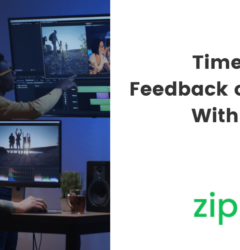The Future of Collaborative Video Experiences
12 Apr
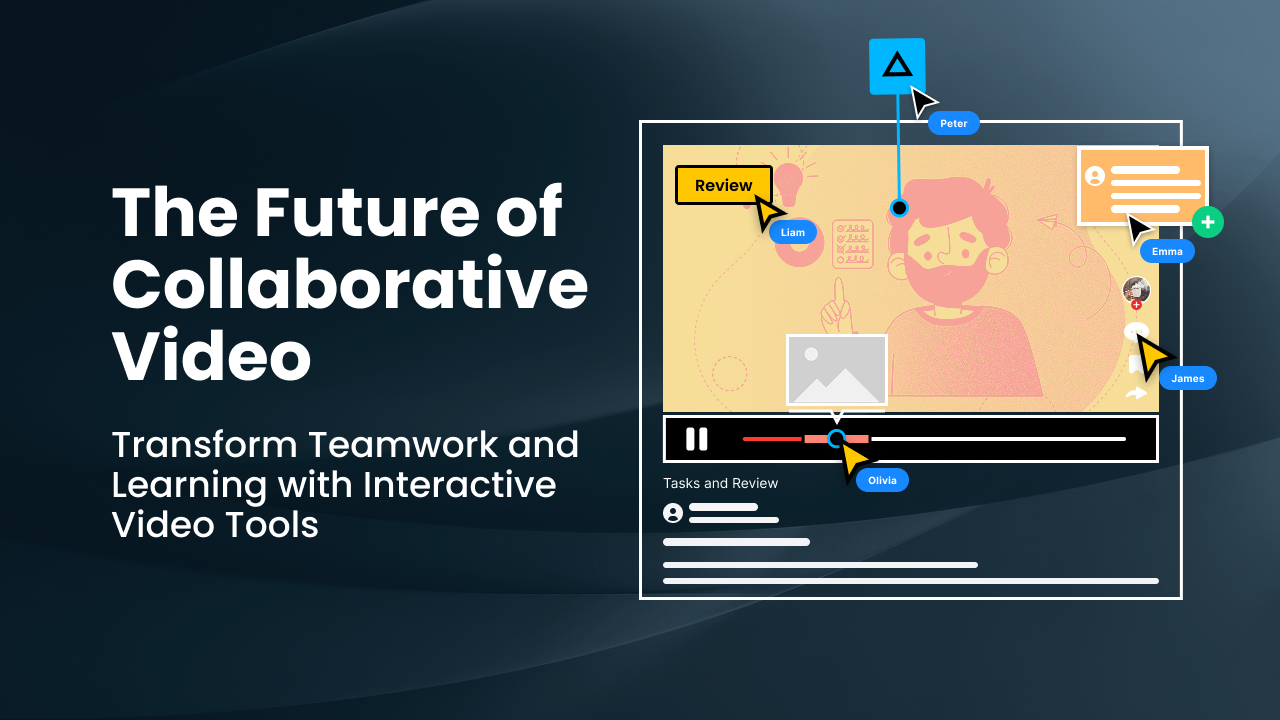
Table of Contents
ToggleSo… when did video stop being a one-way street?
Remember when videos were just watch, rewind, repeat? Those days are long gone. The digital workspace has transformed video from a passive medium into an engaging, collaborative powerhouse that’s reshaping how teams communicate, learn, and create together.
From One-Way to Collaborative
Modern collaborative video tools have become the cornerstone of effective teamwork, enabling:
- Real-time feedback during live presentations
- Asynchronous discussions through timestamped feedback
- Interactive learning experiences with Q&A capabilities
- Seamless integration of multiple perspectives in content creation
The evolution from traditional one-way video to interactive experiences mirrors the changing dynamics of modern work culture. Teams now demand tools that facilitate instant communication, clear feedback, and meaningful collaboration—regardless of physical location or time zones.
A New Way to Work
Picture this: A design team reviews a product demo video. Instead of sending lengthy emails about specific moments, team members drop precise comments at exact timestamps. The marketing team jumps in with suggestions while clients add their insights directly on the video. What used to take days of back-and-forth now happens in minutes.
This shift has turned video into a dynamic conversation starter, a teaching tool, and a collaboration hub. Students ask questions at specific video timestamps, teams brainstorm through visual annotations, and creators gather instant feedback to improve their content.
The age of passive video consumption? That's ancient history
Watching a video used to be a solo thing — just you, a screen, and maybe some popcorn. Not anymore. Now, video has become a space for connection. The latest tools make it easy for teams to jump in, comment, collaborate, and turn passive watching into active problem-solving. Every moment becomes a chance to share ideas, move projects forward, and create something better together.
1. The Shift to Interactive Video Communication
Traditional video formats have transformed from passive viewing experiences into dynamic, two-way conversations. Teams now engage with video content through interactive elements, creating a rich dialogue between creators and viewers.
Asynchronous Video Tools Leading the Change
- Loom revolutionizes quick updates and feedback with instant recording capabilities
- Clixie AI turns standard videos into interactive experiences with clickable elements
- Vimeo enables collaborative review with frame-accurate commenting
The rise of these platforms has redefined how teams communicate across time zones and work schedules. A product manager in New York can leave detailed visual feedback on a design, while their colleague in Singapore can respond with contextual annotations during their workday.
Timestamped Comments: A Game-Changer
Precise feedback at specific video moments has eliminated the confusion of traditional written communications. Team members can:
- Pin comments to exact frames
- Create threaded discussions around specific points
- Track the resolution of feedback in real-time
This evolution in video interaction has sparked new possibilities for remote collaboration. Design teams iterate faster through visual feedback loops, while educational content creators gauge learner engagement through interactive checkpoints. The ability to have meaningful discussions within the video itself has transformed static content into living documents that evolve with team input.
Give timestamped feedback on videos and collaborate with internal and external stakeholders in one place – zipBoard
2. Innovations in Real-Time Feedback
Real-time video feedback has changed the way teams work together on video projects. Tools like Frame.io and zipBoard now offer advanced features allowing reviewers to highlight specific video parts with accuracy and clarity.
Here’s an example: A video editor gets immediate alerts when stakeholders leave detailed comments during playback. Each comment automatically points to the exact moment in the video, removing any uncertainty about which scene needs improvement.
Key Features of Modern Video Feedback Platforms:
- Direct on-screen drawing and annotations
- Frame-accurate commenting with timecode references
- Version comparison tools
- Real-time collaboration notifications
- Mobile-friendly review capabilities
Teams using timestamped commenting report up to 60% faster review cycles. A notable example is the production team at Red Bull Media House, which cut its feedback loops from days to hours by implementing real-time video collaboration tools.
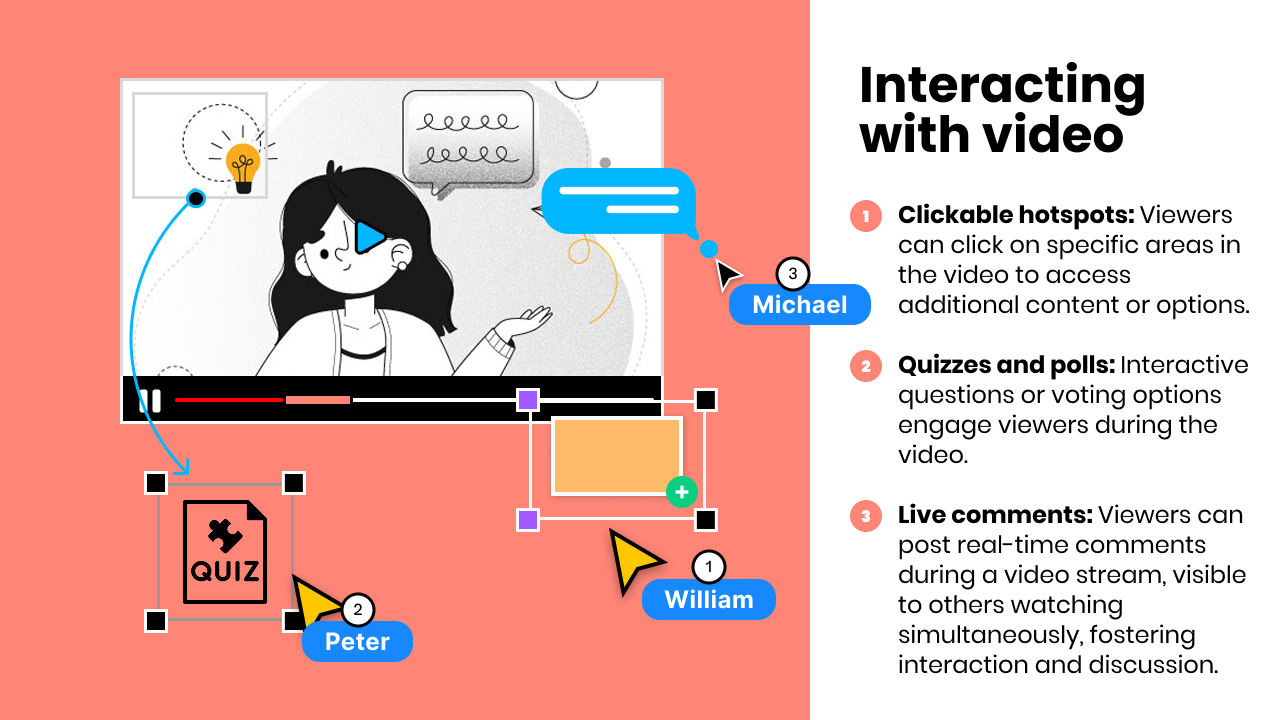
The impact extends beyond just speed. Marketing agency Wieden+Kennedy used frame-specific annotations to coordinate complex multi-language video campaigns across global teams. Their creative directors could pinpoint exact moments needing cultural adaptation, leading to more nuanced and effective international content.
These tools are especially useful for remote work – directors can guide editors through intricate changes, motion designers can clarify animation timing, and clients can provide precise feedback without lengthy email chains or confusing screenshots.
Recommended Reading: What Is Content Operations? And Why It Breaks Without a Feedback & Approval System
3. AI-Assisted Reviews Transforming Content Creation
AI has changed the game for video content creation by introducing smart tools that make the review process easier. Platforms like Descript and Clixie AI offer powerful features that turn raw footage into polished content:
Automatic Transcription
- Speech-to-text conversion with 98% accuracy
- Multi-language support and dialect recognition
- Searchable text synchronized with video timestamps
Smart Editing Suggestions
- Filler word detection and removal
- Automated pacing adjustments
- Background noise reduction recommendations
AI tools now find potential problems before human reviewers notice them:
- Inconsistent audio levels
- Poor lighting sections
- Out-of-focus frames
- Problematic transitions
Topic-based tagging helps teams organize content efficiently:
- Key moments auto-detection
- Audience engagement metrics
- Content categorization
These AI capabilities reduce manual review time by up to 60%. Teams can focus on creative decisions while AI handles technical quality checks. The technology learns from each project, continuously improving its ability to identify issues and suggest enhancements.
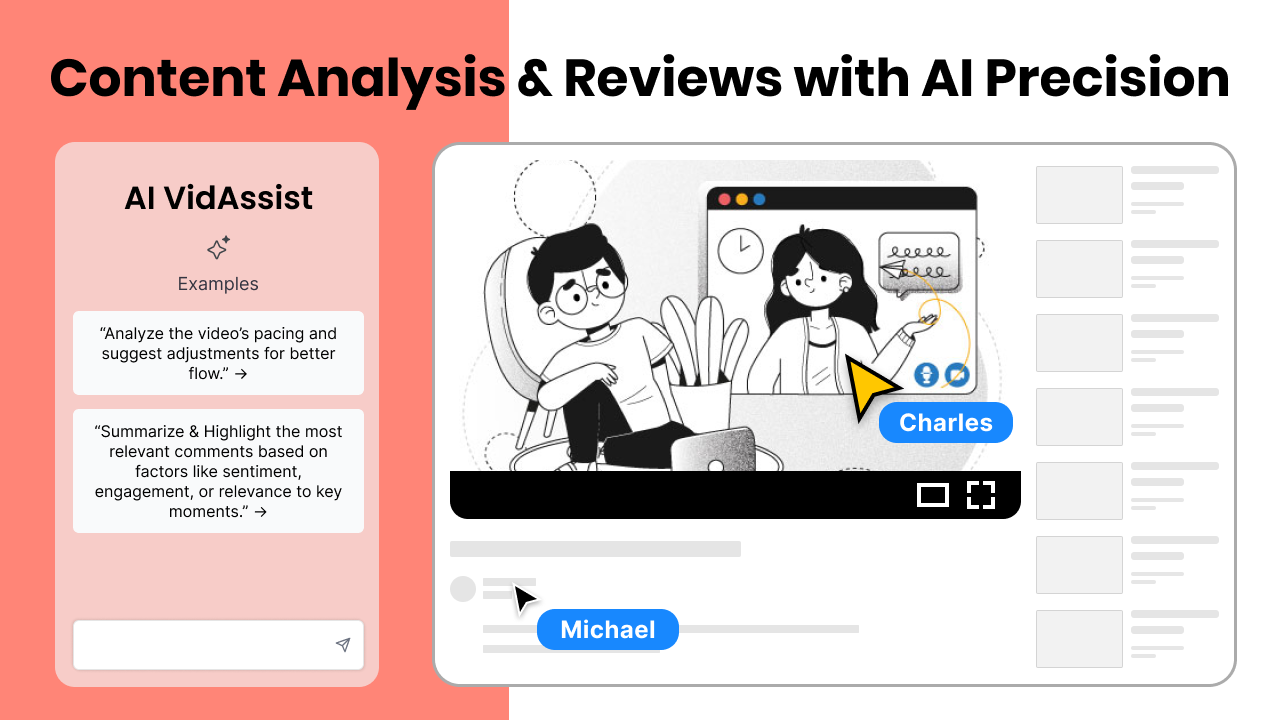
Recent updates in AI platforms introduce sentiment analysis and audience reaction prediction. These features help content creators optimize their videos for maximum impact before publication. Teams now rely on AI to maintain consistent quality standards across large volumes of content while meeting tight deadlines.
4. Enhancing Team Collaboration with Video Tools
Hybrid workplaces need communication tools that work well in physical and virtual spaces. Video collaboration platforms have become essential tools for keeping teams connected and allowing them to have shared experiences regardless of their location.
How Different Teams Use Video Tools
Various teams use video tools in their own specific ways:
Marketing Teams
Marketing teams make use of collaborative video platforms for:
- Real-time reviews of brand assets
- Feedback sessions on campaigns
- Approval of social media content
Educational Institutions
Educational institutions employ these tools for:
- Observations of peer teaching
- Critiques of student projects
- Discussions on curriculum development
Challenges in Video Collaboration and Their Solutions
The road to successful video collaboration isn’t without its challenges. Teams often face difficulties such as:
Time Zone Coordination
This can be resolved through asynchronous video messaging with built-in annotation features.
Technical Barriers
Cloud-based platforms requiring minimal setup can help overcome this issue. These platforms often leverage cloud storage solutions which provide the necessary infrastructure for seamless video editing.
Communication Clarity
Visual markup tools and timestamped comments can enhance clarity in communication.
Transforming Challenges into Opportunities
Interactive video technology turns these challenges into chances for better collaboration. Teams using platforms like zipBoard have reported stronger connections between remote and office-based colleagues, resulting in a cohesive workplace culture that spans across continents.
The Shift Towards Video-First Communication
The increasing popularity of video-first communication indicates a broader change in workplace dynamics. Nowadays, teams expect tools that not only enable meetings but also provide immersive environments for authentic collaboration and creativity.
5. Viewer Engagement and Feedback Dynamics
The relationship between content creators and viewers has evolved into a dynamic conversation. Viewer comments now shape content development in real-time, creating a rich collaborative environment where ideas flow both ways.

The Power of Viewer Input
Viewer feedback has become a driving force behind content creation. Here are some ways in which viewer input is making an impact:
- Direct timestamps highlight specific moments needing clarification
- Question threads spark deeper discussions
- Shared experiences add valuable context
- Quick polls guide content direction
Students have transformed passive video lectures into interactive learning spaces. They pin questions to specific timestamps, share additional resources, and build knowledge collectively. This collaborative approach turns every video into a living document that grows richer with each interaction.
Creating Engagement-Driven Content
Content creators can boost viewer participation through:
- Strategic pause points for reflection
- Built-in discussion prompts
- Interactive elements like polls or quizzes
- Response-driven content updates
The feedback loop between creators and viewers has become increasingly sophisticated. Viewers’ comments often trigger content updates, supplementary materials, or even new video topics. This iterative process ensures content stays relevant and addresses real user needs.
Measuring Impact
To gauge the effectiveness of viewer engagement strategies, creators can track the following metrics:
- Comment sentiment analysis
- Response patterns
- Engagement metrics
- Content adaptation rates
These metrics help creators understand viewer needs and optimize their content accordingly. The result? A more engaged audience that actively contributes to the learning experience.
6. Real-world Applications and Use Cases
Visual collaboration tools like zipBoard have transformed how teams work with video content in various industries. Let’s explore some practical uses that demonstrate the effectiveness of these tools.
eLearning Development Teams
- Course creators annotate video lessons directly, pinpointing areas for improvement
- Subject matter experts leave time-stamped feedback on technical accuracy
- Instructional designers collaborate on multimedia elements without endless email chains
Web Development Projects
- QA teams mark UI inconsistencies with visual annotations
- Developers track bug fixes through visual documentation
- Clients provide precise feedback on website functionality and design
Bug tracking and reporting for a website QA review
Marketing and Creative Teams
- Video editors receive frame-accurate feedback from stakeholders
- Brand managers ensure consistency across video campaigns
- Content teams coordinate multilingual video adaptations
Educational Institutions
Students and teachers create interactive video discussions:
- Highlighting key concepts with visual markers
- Sharing timestamps for important lecture segments
- Building collaborative study guides through video annotations
zipBoard’s centralized platform eliminates communication barriers by hosting all project materials in one accessible space. Teams across time zones can collaborate seamlessly, while project managers maintain clear oversight of progress and feedback implementation.
The visual nature of these tools transforms abstract feedback into actionable insights. A marketing team in New York can precisely communicate changes to their video production team in Singapore, while an eLearning developer can quickly address client concerns about course content through direct visual references.
7. The Future of Collaborative Video Experiences
The world of collaborative video is quickly moving towards exciting new developments that will change the way we connect and create.
Virtual Reality (VR) Integration
Virtual Reality (VR) integration is set to change team interactions, allowing participants to share immersive 3D spaces while watching video content. Imagine design teams walking through animated sequences together in virtual environments, pointing out elements needing real-time adjustment.
AI-Powered Smart Assistants
AI-powered smart assistants will completely change the review process by:
- Automatically finding potential problems in video content
- Suggesting the best edit points based on viewer engagement data
- Creating personalized learning paths in educational settings
- Making real-time translations and cultural adaptations
5G and Edge Computing
The rise of 5G and edge computing will solve latency problems, making it possible for global teams to watch videos in perfect sync. This technological advancement will open up new opportunities for:
- Live collaborative editing sessions
- Multi-angle simultaneous viewing
- Real-time motion tracking annotations
- Instant high-resolution video sharing
Interactive Video Platforms
Educational environments will experience a significant change as interactive video platforms develop further. Students will interact with content through:
- Gesture-based interactions
- Branching narrative paths
- Peer-to-peer video discussions
- AI-guided learning progressions
These advancements indicate a future where video collaboration becomes more natural and seamlessly integrated into our everyday work routines, changing how teams learn, create, and innovate together.
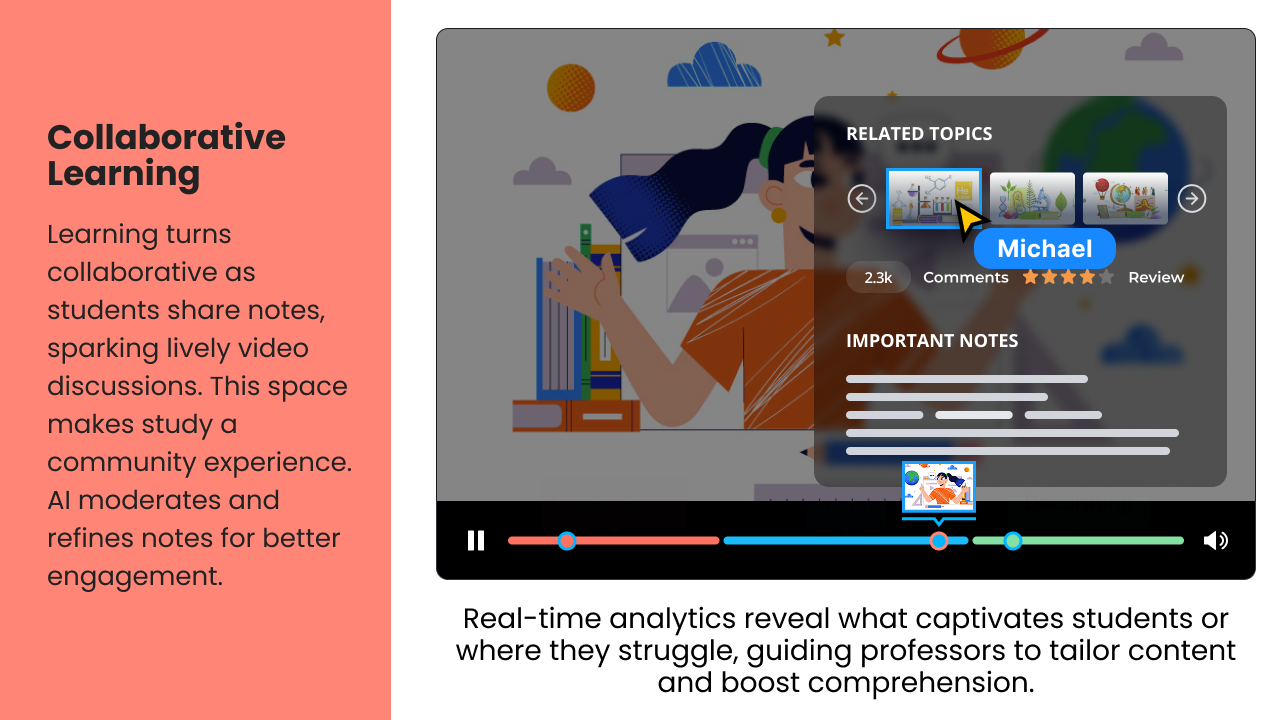
Conclusion: Embracing the Future of Collaborative Video Tools
The shift from viewing videos as just content to using them as interactive collaboration spaces is a game-changer for teams. It changes how we work, learn, and create together. Platforms like zipBoard demonstrate the power of visual feedback tools in overcoming communication obstacles and speeding up project completion.
Your team must adopt these groundbreaking technologies to thrive in this changing environment. Begin with small steps—use timestamped comments during your upcoming video evaluations, implement AI-driven transcription for meetings, or incorporate interactive features into training videos.
Want to revolutionize your team’s collaboration? Here’s how you can start:
- Explore a new video collaboration tool
- Provide feedback using visual annotations
- Utilize AI-powered review features
- Develop interactive content for better involvement
The future of teamwork is now – are you ready to play a role in it?
FAQs About Collaborative Video Experiences
The shift from one-way video formats to interactive experiences allows for dynamic conversations among team members. This transformation promotes engagement through features like timestamped comments and threaded discussions, making providing and implementing feedback effectively easier.
Innovations in real-time feedback include features like instant commenting, annotation capabilities, and integrated feedback systems in platforms such as Frame.io. These features improve clarity in communication and help teams act on feedback more efficiently.
AI-assisted review tools, such as Descript and Clixie AI, enhance content quality by offering automatic transcription, editing suggestions, and topic-based tagging. These technologies reduce manual workload and improve overall efficiency in the review process.
Viewer comments significantly contribute to content development in collaborative settings by providing direct feedback to creators. This interaction fosters a feedback loop that enhances viewer engagement and ensures content meets audience needs.
zipBoard is a visual collaboration tool ideal for web development and eLearning teams. Its real-world applications include providing centralized visual feedback on projects across various media types, which enhances project management efficiency across different industries.
Author Bio:
Jancarlo Nesto is a multicultural business leader with expertise in interactive video, digital transformation, and global markets. As Co-Founder and Director of Operations at Clixie AI, he helps businesses enhance video content with AI-powered interactivity, driving engagement and conversion. Passionate about startups, crypto, and blockchain, he specializes in scaling ventures and navigating international markets.
Recent Posts
- MEP Document Management: How to Streamline Reviews & Avoid Rework October 3, 2025
- What Is Online Proofing Software? And Why Content Review Breaks Without It July 11, 2025
- How Laerdal Medical Cut eLearning Review Time by 50% with zipBoard’s Visual Review Tool July 9, 2025
- Why Your Team Needs a Content Feedback System (Not Just Comments in Docs) May 28, 2025
- Content Approvals Are Slowing You Down — Here’s the Fix May 26, 2025
©️ Copyright 2023 zipBoard Tech. All rights reserved.
